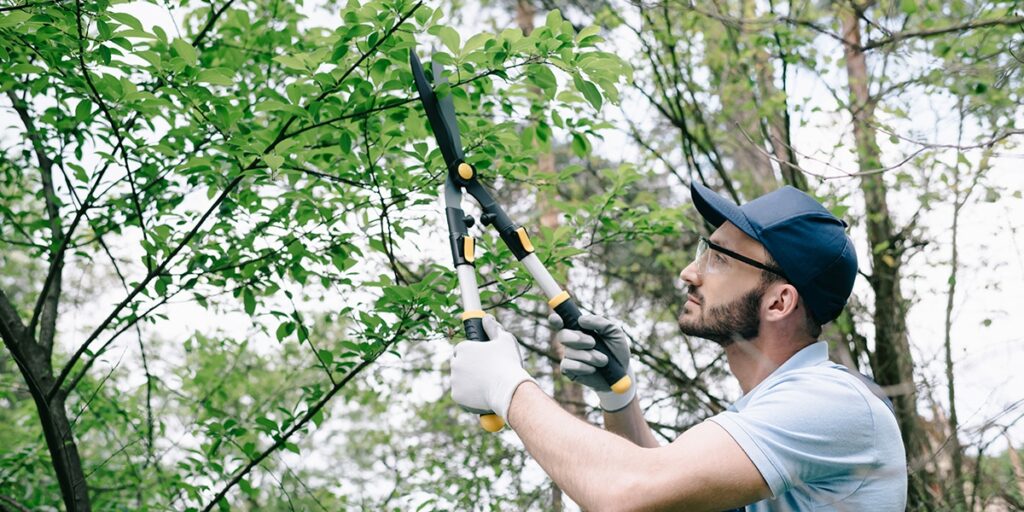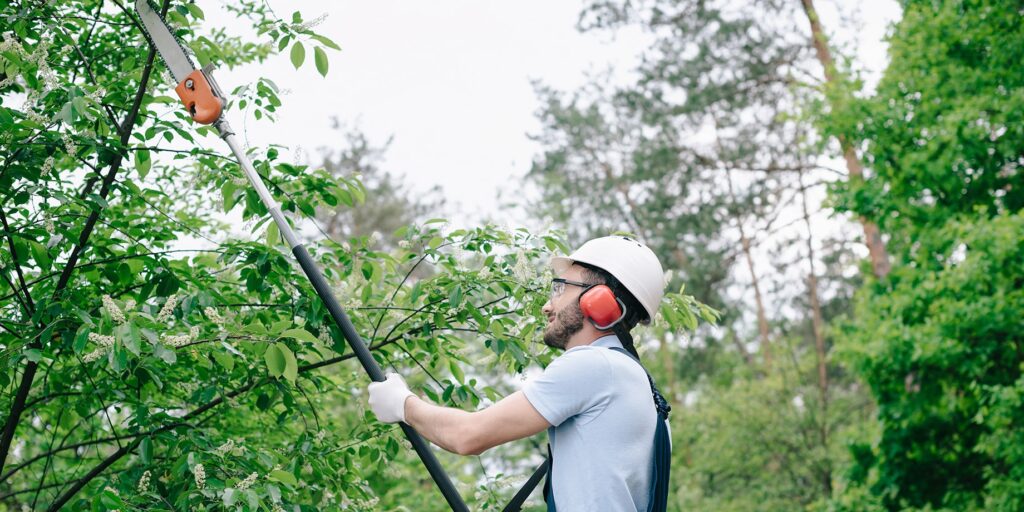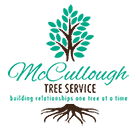By: Shelby McCullough| Published: July 1, 2024
Maintaining healthy and aesthetically pleasing trees requires regular care. Two fundamental practices in tree care are trimming and pruning. Though often used interchangeably, these terms have distinct meanings and purposes. Understanding the differences between trimming vs. pruning can help you make informed decisions for your tree maintenance needs.

What is Tree Trimming?
Tree trimming involves cutting back overgrown branches to improve the tree’s appearance and promote healthy growth. This practice is essential for maintaining the tree’s shape and ensuring that it doesn’t interfere with structures or other plants.
Benefits of Tree Trimming
- Improves Aesthetics: Trimming enhances the tree’s appearance by removing unsightly branches.
- Promotes Growth: By cutting back overgrown branches, more sunlight and air can reach the tree, encouraging healthier growth.
- Safety: Trimming prevents branches from growing too close to power lines or structures, reducing potential hazards.
What is Tree Pruning?
Tree pruning, on the other hand, focuses on removing dead, diseased, or damaged branches to ensure the tree’s overall health and safety. Pruning is a more selective process, aimed at improving the tree’s structure and longevity.

Benefits of Tree Pruning
- Health: Pruning removes diseased or damaged branches, preventing the spread of disease and decay.
- Structure: Pruning helps shape the tree and encourage strong, healthy growth patterns.
- Safety: Removing weak or damaged branches reduces the risk of them falling and causing damage or injury.
Key Differences Between Trimming vs. Pruning
While both trimming and pruning are essential for tree maintenance, they serve different purposes and are performed at different times.
Timing
- Trimming: Typically done during the growing season to control growth and shape the tree.
- Pruning: Usually performed during the dormant season to minimize stress on the tree and promote healing.
Focus
- Trimming: Aesthetic improvements and growth control.
- Pruning: Health, safety, and structural integrity.

When to Trim and Prune
Knowing when to trim and prune your trees can significantly impact their health and appearance.
Tree Trimming Schedule
- Spring and Summer: Ideal for trimming as the tree is actively growing, allowing it to quickly recover and continue healthy growth.
- Fall and Winter: Generally not recommended as the tree’s growth slows down, and trimming can cause stress.
Tree Pruning Schedule
- Late Winter to Early Spring: The best time for pruning as the tree is dormant, reducing the risk of disease and allowing for quicker recovery.
- After Storms: Pruning may be necessary to remove storm-damaged branches and ensure safety.
How to Trim and Prune Trees
Proper techniques for trimming and pruning are crucial to avoid damaging your trees. Here are some tips for effective tree maintenance.
Tree Trimming Techniques
- Use Clean Tools: Ensure your tools are sharp and clean to make precise cuts and prevent the spread of disease.
- Cut at the Right Angle: Make cuts at a 45-degree angle, just above a bud or branch junction.
- Remove Overlapping Branches: Trim branches that cross over each other to prevent rubbing and damage.
Tree Pruning Techniques
- Remove Dead or Diseased Branches First: Focus on cutting away any parts that are clearly dead, diseased, or damaged.
- Cut Close to the Branch Collar: Make cuts close to the branch collar (the swollen area where the branch meets the trunk) to promote quicker healing.
- Thin Out Dense Areas: Prune branches to open up the canopy, allowing better light penetration and air circulation.
Tools for Trimming vs. Pruning
Using the right tools is essential for effective trimming and pruning. Here are some common tools you might need.
Tree Trimming Tools
- Shears: For smaller branches and precise cuts.
- Loppers: For medium-sized branches that are too thick for shears.
- Pole Trimmers: For high branches that are hard to reach.
Tree Pruning Tools
- Pruning Saw: For larger branches that require more force to cut through.
- Hand Pruners: For small, detailed cuts.
- Chainsaw: For very large branches or tree removal.
Common Mistakes to Avoid
Avoiding common mistakes can help ensure that your trimming and pruning efforts are successful and beneficial for your trees.
Trimming Mistakes
- Over-trimming: Removing too many branches can stress the tree and hinder its growth.
- Improper Cuts: Making incorrect cuts can lead to disease and poor healing.
Pruning Mistakes
- Topping: Cutting the top off a tree can lead to weak regrowth and health issues.
- Timing Errors: Pruning at the wrong time of year can stress the tree and lead to poor recovery.
FAQs: Trimming vs. Pruning
Q: What is the main difference between trimming and pruning?
A: Trimming focuses on improving the tree’s appearance and controlling growth, while pruning is aimed at maintaining the tree’s health by removing dead or diseased branches.
Q: How often should I trim my trees?
A: Trimming is typically done annually during the growing season, but the frequency can vary based on the tree species and growth rate.
Q: Can pruning hurt my tree? A: If done correctly, pruning should not hurt your tree. However, improper pruning can cause damage and stress, so it’s important to follow proper techniques and timing.
Q: Should I trim or prune my tree after a storm?
A: Pruning is recommended after a storm to remove damaged branches and ensure safety. Trimming for aesthetic purposes can be done once the tree has recovered.
Q: What tools do I need for trimming vs. pruning?
A: For trimming, you’ll need shears, loppers, and pole trimmers. For pruning, a pruning saw, hand pruners, and possibly a chainsaw are necessary.
Q: Can I trim or prune my tree myself, or should I hire a professional?
A: While minor trimming and pruning can be done by homeowners, it’s often best to hire a professional for larger trees or extensive work to ensure safety and proper techniques are used.
Q: How do I know if a branch is dead or diseased?
A: Dead branches are typically brittle and have no leaves, while diseased branches may show signs of discoloration, spots, or unusual growths.
Q: What are the risks of not trimming or pruning my trees?
A: Neglecting tree maintenance can lead to overgrown, unhealthy trees that pose safety hazards and may suffer from diseases and poor growth.
Q: How can I find a professional tree service?
A: Look for certified arborists and reputable tree care companies in your area. Check reviews and ask for recommendations from friends and neighbors.
Conclusion
Understanding the differences between trimming vs. pruning is essential for maintaining the health and appearance of your trees. By following proper techniques and schedules, you can ensure your trees remain healthy, safe, and beautiful. Whether you’re doing the work yourself or hiring a professional, regular tree maintenance is a crucial part of landscaping and property care.

